Top Tips for Camping with Dogs
From tent considerations to paw protection, here are our top 10 tips for a paw-some camping trip with your dog!
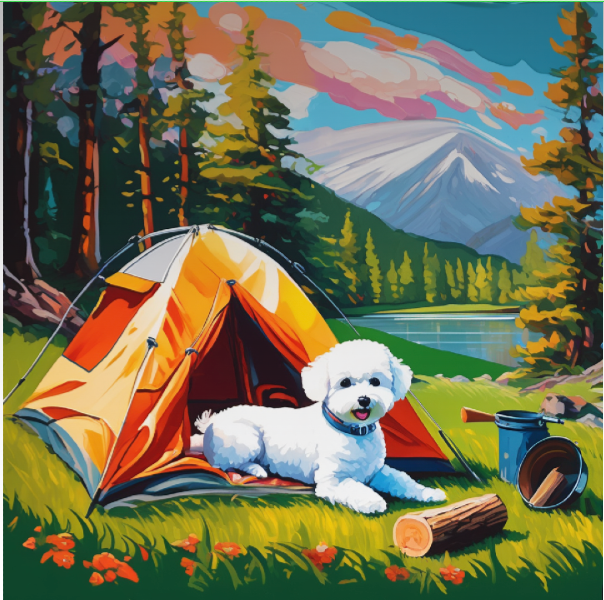
Are you planning to hit the great outdoors with your furry friend? Camping with dogs can be an incredibly rewarding experience, but it does require some preparation to ensure both you and your pup have the best time possible.
Here are our top tips for a paw-some camping trip with your dog! A special thank you to all the PugMug users who contributed their camping tips and tricks on social media. ❤️
1. H2O Overload: Keep the Water Flowing

Dogs, like humans, need plenty of water, especially when they're out in nature. Make sure to bring enough water for the trip (+ extra!), and keep the water cool with some ice. Access to cold water is especially important on hot days.
On particularly hot days, consider also bringing a cooling mat and a dog shade shelter. An inflatable kiddie pool can also be a fun way for your dog to cool off. As soon as you arrive at the campsite, make sure to set up your pup with a water bowl before unpacking your things. Remember, a hydrated dog is a happy camper!
2. Leash Up: The Power of a Good Harness
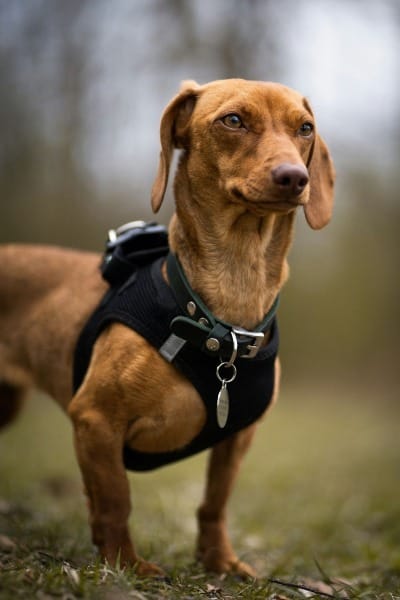
Investing in a sturdy harness and leash is crucial for long walks and exploring the great outdoors. A good leash and harness provides better control and comfort for your dog, making those scenic hikes safer and more enjoyable. Don’t forget to pack a backup leash— it’s always wise to have a spare in case of unexpected breaks or losses!
When choosing a harness, look for one that is well-padded and fits snugly without restricting your dog’s movement. Reflective strips on the harness and leash can also be a great addition for visibility during early morning or late evening walks.
3. Potty Breaks and Leg Stretches: Frequent Stops are a Must
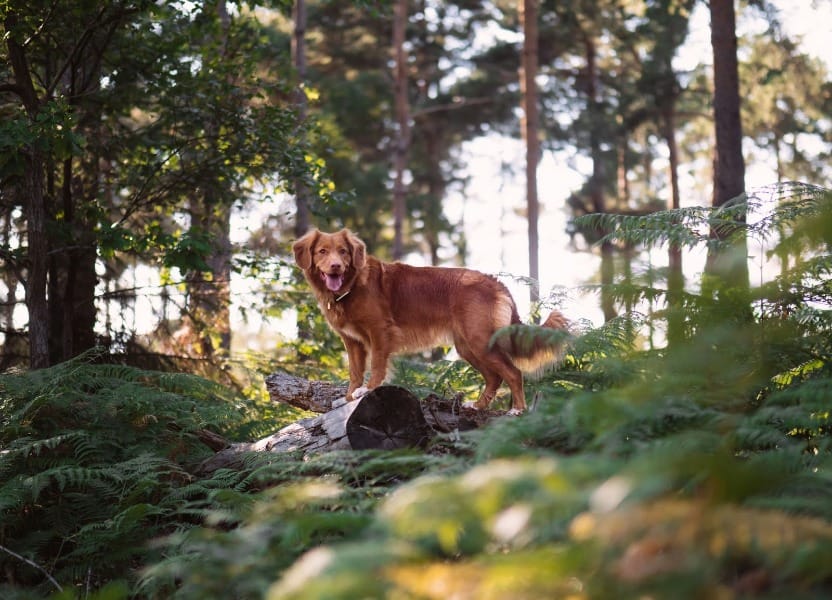
Regular potty breaks and opportunities for your dog to stretch their legs are essential, especially during longer road trips. Plan your trip with frequent stops and always bring poop bags. A responsible camper leaves no trace, and this includes your dog’s waste!
Long car rides can be tough on dogs, so planning stops every couple of hours can also help them stay comfortable and happy. Use these breaks to let your dog sniff around and explore a bit, which can be a great way for them to relieve stress and burn off some energy. Check out our blog post on Top Tips for Road Trips with Dogs for more tips for a fun and stress-free journey to the campsite.
4. Tent vs. Camper Van: Choosing the Right Shelter
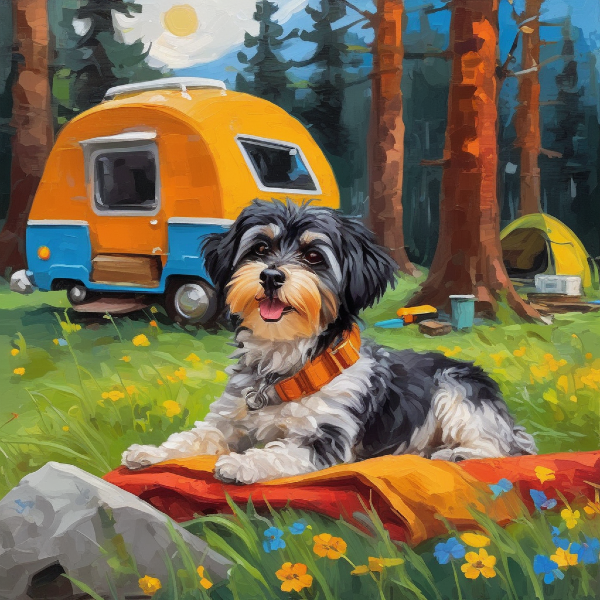
Deciding whether to camp in a tent or a camper/RV can significantly affect your dog’s comfort. If you're staying in a camper or RV, the built-in temperature control and solid walls can provide a more controlled environment for your dog. However, if you prefer tent camping, choose a tent with enough space for your dog to move around comfortably.
If you opt for a tent, consider:
- Space - bigger is better; the more space you have in your tent, the more space there will be for your pup to stretch out and play.
- Security - make sure your tent zips up from the outside to avoid your pet going out for a walk in the middle of the night. For extra security, you might consider propping up a bag or another heavy object outside the tent door.
- Temperature - if it’s going to be hot, RVs or campers may be a safer bet than a tent.
- Noise - night sounds and critters can startle dogs. White noise machines can be handy to drown out unfamiliar night noises.
Matching the sleeping arrangements to what your dog is used to at home can help them feel more secure . If they're used to sleeping in a dog bed, bring their favorite dog bed with you. If they're used to sleeping in your bed, buy a spacious sleeping bag to make room for your pup. Bringing their favorite blanket or bed from home can also help them feel more at ease. Ensuring your dog is comfortable at night will lead to better sleep for both of you.
5. Treats and Toys: Keep Your Dog Entertained

Bringing plenty of treats and chew toys can keep your dog entertained both during the car ride and while you set up camp. Upon arrival, set up your dog’s area first. This allows you to focus on pitching the tent or preparing meals without constant interruptions from a bored or restless dog.
Once you arrive at the campsite, setting up a designated area with your dog’s favorite toys and treats can also make them feel at home in the new environment. Puzzle toys or long-lasting chews can be particularly helpful in keeping your dog occupied for extended periods. A busy dog is a content dog, and this will make the whole experience smoother.
6. ID and Health: Essential Documentation

Don’t forget to pack your dog’s vaccination records and an ID/photo of your furry friend. This is crucial in case of emergencies and helps if your dog gets lost. Having these documents handy can save a lot of stress.
Additionally, consider microchipping your dog and ensuring their collar has up-to-date identification tags. In the unfortunate event that your dog wanders off, these precautions can greatly increase the chances of a swift reunion. Carrying a recent photo of your dog can also be useful for creating lost dog posters or showing to people who might help in the search.
7. Allergy Awareness: Keep an Eye Out

Just like humans, dogs can suffer from seasonal allergies. Familiarize yourself with the symptoms and how to manage them, especially if you’re traveling in the springtime (a.k.a pollen season).
Be mindful of the flora in the area where you’ll be camping, as certain plants can trigger allergic reactions in dogs. Symptoms can include itching, redness, and sneezing. Packing antihistamines (after consulting with your vet) and keeping your dog away from known allergens can help manage these issues. Keeping your dog clean and free of pollen or other allergens by wiping them down after walks can also help.
8. Wildlife Watch: Safety First
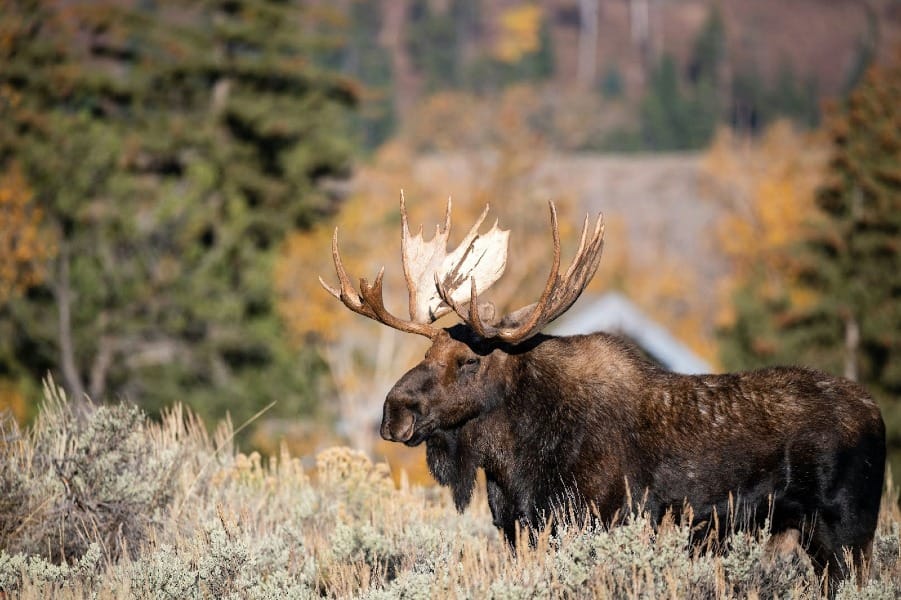
Wild animals can be both dangerous and intriguing to dogs. To avoid attracting wildlife to your campsite, store all food in airtight containers and dispose of trash properly.
Also, if you’re going out on a hike, always keep your dog on a leash to prevent any unwanted encounters with local wildlife. Keeping your dog on a leash not only protects them from potential dangers but also helps preserve the natural habitat by preventing your dog from disturbing local plants and animals.
9. Dog-Friendly Activities: Plan Ahead

Research your destination in advance to find dog-friendly activities such as trails, beaches, and parks. That way, you’ll have a plan for places to go if your pup gets bored of hanging out at the campsite. Exploring new trails or having a picnic by a dog-friendly beach can create wonderful memories for both of you.
When picking a campsite, look for campsites with amenities like wash stations, fenced play areas, and plenty of shade. Some campsites even offer specific amenities designed for dogs, such as agility courses or designated dog swim areas.
10. Paw Protection: Safety for Those Paws
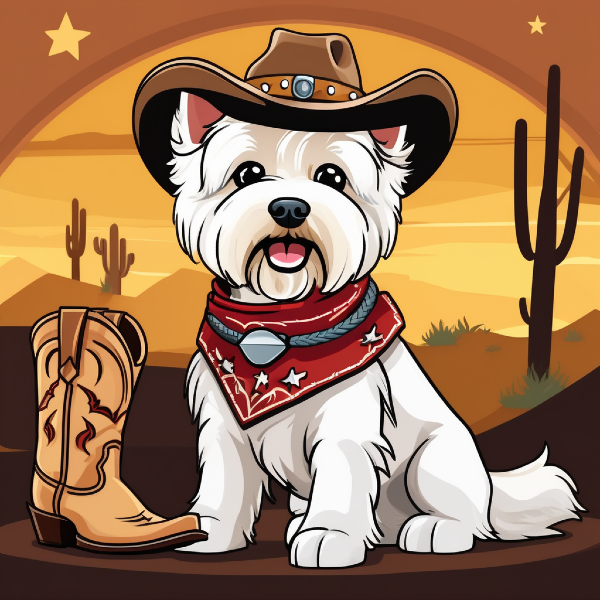
New terrains can pose various threats to your dog's paws. You can plan to protect your dog’s paws with paw protectant lotion or booties, especially on hot pavement and trails with rocky or rough terrain.
Also, make sure to trim your dog’s nails before the trip to prevent them from poking holes in your tent or in their camping blanket.
Regularly checking and caring for your dog's paws during the trip can prevent injuries and ensure they stay comfortable. Healthy paws are happy paws!
Conclusion
Camping with dogs is a fantastic way to bond with your furry friend and enjoy nature together. For more tips on unique adventures with dogs, check out our post unique places to take your dog.
Before you head out and hit the trails, don’t forget to visit PugMug's Explorer style pack to see our fun camping art style. At PugMug, we offer unique custom pet portraits in a variety of adventure and artistic settings.
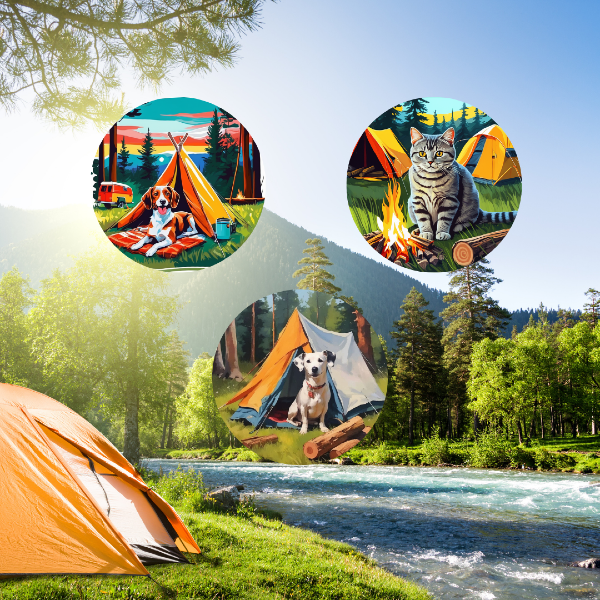
Happy camping, and don’t forget to snap some photos of your pup enjoying the great outdoors!
